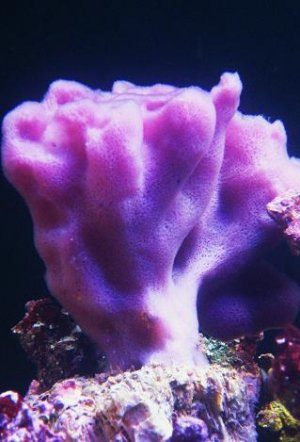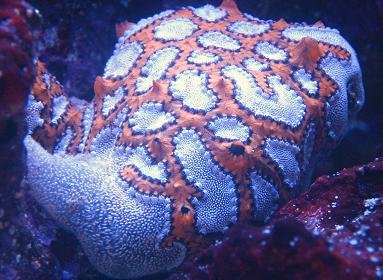Nice list of things. Nice tiger tunicate(normally misnamed) "With the recent wave of dazzling colored marine imports from Australia, an odd, yet striking creature dubbed the Tiger Sponge has captured the eye of many aquarists. This “sponge” is not new to collection or import. In fact, many brightly colored specimens, make their way to wholesalers and retailers from a variety of collection locales.
The animal shown here is not a sponge at all– it is a social sea squirt (Synascidian), a member of the Ascidiacae, or tunicate, family. Ironically the ‘Tiger Sponge’ is a Botrylloid Tunicate (Botrylloides sp.). This family is better known for its invasive chokehold abilities, than its dazzling colors. In the aquarium hobby, they are usually sold misnamed and misunderstood to an aquarists that is convinced that this animal’s striking colors and amorphous shape would make it the perfect addition to their reef. Unfortunately they are terribly difficult to sustain.
Upon closer inspection of this Botrylloid Tunicate or Sea squirt, we can see the complex zooid structures that separate ascidians from lower life sponges. Each small zooid is interconnected through a complex colonial vascular system. Interestingly, ascidians incorporate vanadium (which can be toxic) into their blood pigment through a chemical known as Vanabin, a vanadium-binding protein. To this day scientists still do not know or understand the roll vanadium plays in Sea Squirts.
Some theorize it is used as an oxygen transport mechanism similar to the use of iron and hemoglobin in humans, however Tunicates also have the copper based hemocyanin that can function in a similar roll. While I don’t suspect aquarists will encounter vanadium laced tunicate blood anytime soon, it exemplifies how much we have yet to learn about these animals.
Unfortunately we are just as uneducated on their captive care. Realistically, the specimen shown here and in most aquarium photographs will perish. While some Botrylloid species have been kept successfully (See Knop, Coral Vol. 6 No. 4) I have yet to personally hear of any long term success with the vibrant species that the trade uses the colloquial term ‘Tiger Sponge’ to describe. [If you have had success with Botrylloides, or any tunicates for that matter, let us know in the comments]
Some scientific literature has been published on the culture of tunicates. In a 1998 Study, Rinkevich and Shapira found positive growth in juvenile colonies of B. schlosseri using a combination of
Dried algae
Nannochloropsis
Dunaliella salina
Isochysis galbana
Argent Hatchfry Encapsulation
Argent Artifical Plankton
Freeze dried rotifers
Other studies have found positive growth using Diatoms, various Fry Feeds and other live algaes such as Chlorella. The recurring theme throughout these success has been variety and density. There is still much to be learned and information to be shared; for now my advice is to leave these to public aquariums, scientists, and experts that can dedicate experimental tanks with near limitless supplies of foods."
Link from another site.
Nice purple sponge too. Nice skimmer. I have the Nac6 and love it. Love to see some FTS.



